John Hurrell – 3 May, 2011
The Bambury wall installation alludes to the so-called end of art history, but there are other meanings too. Mystical deistic ones for Malevich, but for Bambury the black shapes reference a corner of the original display space, and could now in 2011 be ‘post-art' shadows. They might also be incinerated art, or apertures, black holes in the gallery wall to assist art to escape.
There are largely four types of work in this new Stephen Bambury show, three of which will be familiar to those who have visited his various shows at Jensen and saw his Slipped Cross and Centre Void paintings, and the sculptures of skewed timber and plaster houses (also shown more recently in Christchurch).
The big surprise is his new 21 panel installation, Site Works: Second Series, black planes flat on the wall shaped to demonstrate perspectival distortion, and based on the famous photograph of Malevich and other artists’ 0 -10. The Last Futurist Exhibition of Pictures held in the Dobychina Art Bureau hall, Field of Man, Petrograd in December 1915. Malevich had 39 works, this contribution dominated by the then new Suprematist painting, Black Square, placed high over a corner - like an icon.
Bambury’s work is witty in that he has taken Malevich’s apparent logic, and covered all the shapes of exhibited constructivist paintings (as presented perspectivally in that photograph) the same way. Covered them in black. (Actually that ‘logic’ is not strictly true, for Malevich’s radical painting was a black square on a white field. Its geometric shape was important, the support not being ‘wiped out’. It was not as extreme as it could have been, even though it was certainly perceived as being about nihilistic obliteration - placing the ‘corpse’ of the Art of Painting in its coffin and ‘marking it with the Black Square’. As an extreme action in its day it obviously shocked.)
The Bambury wall installation alludes to the so-called end of art history (if solely painting makes art history, and if art history ever was, or is, ‘progressive’), but there are other meanings too. Mystical deistic ones for Malevich, and in Bambury’s display the black shapes, with their negative forms between them, reference a corner of the original display space, and could now in 2011 be ‘post-art’ shadows. They might also be incinerated art, as if blasted by a bomb, or apertures, black holes in the gallery wall to assist art to escape.
Those panels hover over the wall, are not pressing up against it, and cast faint shadows that bring a slightly blurry edge that just disrupts the focus - a metaphor for past history perhaps and our difficulties often in clearly perceiving it.
This presentation makes perfect sense if we see it as a synthesis of the history of cross paintings - from Malevich to Nixon and later - with the Center Void works (sometimes with cut-out holes) and the afore mentioned black holes. It is a clever blending of the other two strands Bambury is presenting.
Of those other series, the skinny crosses (Slipped Cross series) work best, showing off the pressures, as in SC119164 for example, that the overlapping black and orange vertical and horizontal bars place on the edge of the projecting cream plane. There is a vaguely trembling sense of the straining outer extremities being curtailed by the painting’s contours. In contrast SC119166 has a single much larger orange cross interacting with three stunted black rectangles embedded in the cream but hovering enigmatically around the cross tips. They bring a quirky drama to the painting.
The Centre Void series in an odd way seem to be a literal and very physical commentary on some of Gordon Walters’ Transparency paintings, and sometimes here Bambury takes it further by letting real space intervene inside an overlapping illusory one. They lack the obvious dynamic qualities that the Slipped Cross works demonstrate, being more about asymmetry, the planar more than linear, and chromatic contrast over shapely placement.
Now the title of the exhibition - a reference to Japanese Noh theatre - seems to allude to the discomfort many westerners have with the long duration of this theatre’s performances, suggesting some of Bambury’s paintings take time to comprehend, and that patience is rewarded. Be that as it may, I’m not persuaded about the Centre Void works. This show is worth checking out for the 21 piece wall installation - and the two or three Slipped Crosses.
John Hurrell
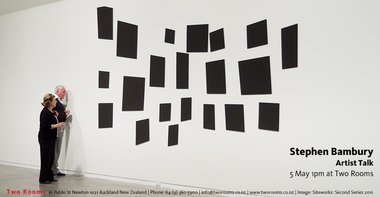
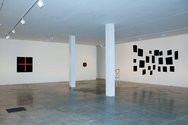
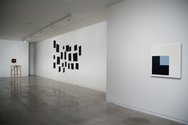
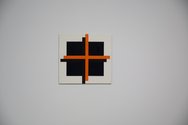
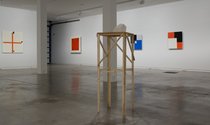
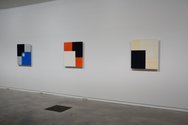
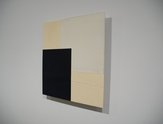
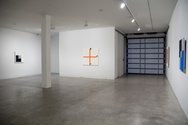
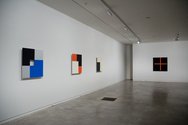
 Advertising in this column
Advertising in this column Two Rooms presents a program of residencies and projects
Two Rooms presents a program of residencies and projects



This Discussion has 0 comments.
Comment
Participate
Register to Participate.
Sign in
Sign in to an existing account.